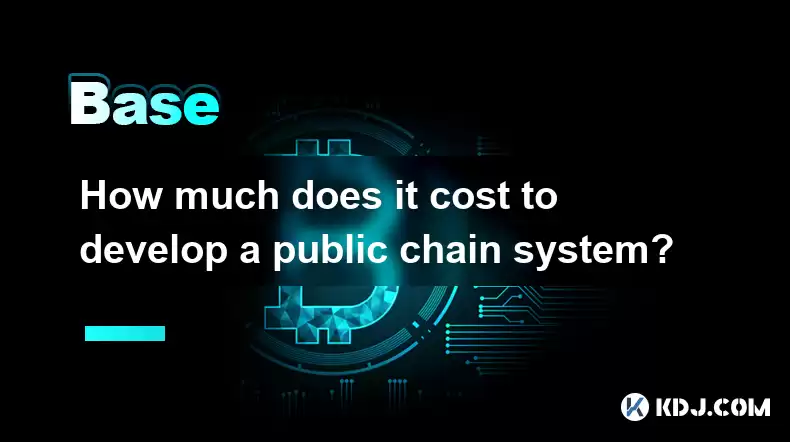-
 Bitcoin
Bitcoin $118900
1.66% -
 Ethereum
Ethereum $3735
1.35% -
 XRP
XRP $3.506
0.71% -
 Tether USDt
Tether USDt $1.000
-0.01% -
 BNB
BNB $799.4
5.78% -
 Solana
Solana $202.0
1.87% -
 USDC
USDC $0.9999
0.00% -
 Dogecoin
Dogecoin $0.2661
1.89% -
 Cardano
Cardano $0.8877
1.59% -
 TRON
TRON $0.3173
2.45% -
 Hyperliquid
Hyperliquid $45.00
2.59% -
 Stellar
Stellar $0.4723
3.40% -
 Sui
Sui $3.970
1.32% -
 Chainlink
Chainlink $19.67
1.94% -
 Hedera
Hedera $0.2710
1.99% -
 Avalanche
Avalanche $25.74
-0.01% -
 Bitcoin Cash
Bitcoin Cash $528.1
1.98% -
 Litecoin
Litecoin $120.1
3.57% -
 Shiba Inu
Shiba Inu $0.00001525
1.26% -
 UNUS SED LEO
UNUS SED LEO $8.989
-0.01% -
 Toncoin
Toncoin $3.304
1.74% -
 Polkadot
Polkadot $4.531
3.38% -
 Uniswap
Uniswap $10.74
2.51% -
 Ethena USDe
Ethena USDe $1.001
0.00% -
 Monero
Monero $325.5
2.44% -
 Pepe
Pepe $0.00001413
1.31% -
 Bitget Token
Bitget Token $4.860
0.85% -
 Dai
Dai $0.9999
0.01% -
 Aave
Aave $307.3
-2.07% -
 Bittensor
Bittensor $448.8
2.91%
How much does it cost to develop a public chain system?
Developing a public blockchain costs tens of thousands to millions, depending on features, team expertise, and ongoing maintenance; budgeting must include development, audits, and marketing.
Mar 13, 2025 at 09:35 pm

Key Points:
- The cost of developing a public blockchain system is highly variable and depends on numerous factors.
- These factors include the complexity of features, the team's experience, development time, and ongoing maintenance.
- Expect a wide range, from tens of thousands to millions of dollars.
- Budgeting should encompass development, testing, audits, and marketing.
- Choosing the right development approach (in-house vs. outsourcing) significantly impacts cost.
How Much Does it Cost to Develop a Public Chain System?
Developing a public blockchain system is a complex undertaking, demanding significant financial investment. There's no single answer to the question of cost; it's highly dependent on several interconnected factors. Understanding these factors is crucial for accurate budgeting.
Factors Influencing Development Costs:
- Complexity of Features: A simple blockchain with basic functionalities like token transfer will cost significantly less than a complex system incorporating advanced features such as decentralized finance (DeFi) applications, smart contracts with intricate logic, cross-chain interoperability, and consensus mechanisms beyond Proof-of-Work (PoW) or Proof-of-Stake (PoS). More features mean more development time and expertise.
- Team Expertise and Size: Hiring experienced blockchain developers, security auditors, and project managers commands a premium. A larger team, while potentially accelerating development, increases labor costs. The expertise needed for specialized features, like implementing zero-knowledge proofs, further elevates the cost.
- Development Time: The timeline for development directly correlates with cost. A rushed project, while potentially cheaper in the short term, might compromise security and functionality, leading to higher costs in the long run. Thorough testing and refinement require substantial time investment.
- Technology Stack: The choice of programming languages, frameworks, and infrastructure impacts the development cost. Some technologies might be more expensive due to the specialized skills required or licensing fees. The selection should balance cost-effectiveness with performance and security.
- Ongoing Maintenance and Updates: A public blockchain requires continuous maintenance, security updates, and community support. These ongoing costs should be factored into the initial budget, as they are essential for the long-term viability of the project.
- Audits and Security: Independent security audits are crucial to identify and address vulnerabilities. The cost of these audits varies based on the complexity of the system and the reputation of the auditing firm. Neglecting this crucial step can lead to devastating consequences.
- Marketing and Community Building: Successfully launching a public blockchain requires a robust marketing strategy to attract users and developers. This includes website development, content creation, community management, and potentially paid advertising.
Development Approaches and Their Cost Implications:
- In-House Development: Building an internal team provides greater control but incurs significant upfront costs in hiring, training, and setting up infrastructure. This approach may be suitable for organizations with substantial resources and a long-term vision.
- Outsourcing: Outsourcing development to a specialized blockchain development company can be more cost-effective, particularly for smaller projects or those lacking in-house expertise. However, it requires careful vetting of the outsourcing partner to ensure quality and security. Clear communication and well-defined contracts are paramount.
Cost Breakdown Example (Illustrative):
It’s impossible to provide a precise cost without a detailed project specification. However, a simplified breakdown might look like this:
- Development: $50,000 - $500,000+ (highly variable based on features and team size)
- Auditing: $10,000 - $50,000+ (depends on the scope and complexity of the audit)
- Marketing and Community Building: $10,000 - $100,000+ (can vary greatly depending on strategy)
- Ongoing Maintenance: $5,000 - $50,000+ per year (ongoing costs for updates, security, and community support)
Common Questions:
Q: What is the cheapest way to develop a public blockchain?
A: The cheapest approach often involves using existing frameworks and minimizing the complexity of features. Outsourcing to a cost-effective development team in regions with lower labor costs might also help reduce expenses. However, cutting corners on security or functionality can lead to significant problems later.
Q: Can I develop a public blockchain on my own?
A: Technically, yes, but it's extremely challenging and requires extensive expertise in cryptography, distributed systems, and blockchain technology. It's highly unlikely to be cost-effective compared to using a team or outsourcing.
Q: Are there any free or open-source tools to help reduce development costs?
A: Yes, many open-source frameworks and tools exist, such as Hyperledger Fabric or Ethereum's tools, that can significantly reduce development time and costs. However, integrating and customizing these tools still requires significant technical expertise.
Q: What are the hidden costs associated with developing a public blockchain?
A: Hidden costs can include unexpected bugs requiring extensive debugging, the need for additional security measures uncovered during audits, and unforeseen delays in development. Marketing costs can also escalate beyond initial projections. Thorough planning and contingency budgeting are essential.
Disclaimer:info@kdj.com
The information provided is not trading advice. kdj.com does not assume any responsibility for any investments made based on the information provided in this article. Cryptocurrencies are highly volatile and it is highly recommended that you invest with caution after thorough research!
If you believe that the content used on this website infringes your copyright, please contact us immediately (info@kdj.com) and we will delete it promptly.
- Binance, Leverage, and Perpetual Contracts: A Trader's Deep Dive
- 2025-07-23 16:50:12
- Cardano, Hoskinson, and the ADA Rally: What's Driving the Surge?
- 2025-07-23 17:30:13
- Bitcoin Profit-Taking, Whale Behavior, and Technical Analysis: A July 2025 Snapshot
- 2025-07-23 17:30:13
- Tom Lee's Bold Bitcoin Prediction: $250K by '25 or $3M Long Term?
- 2025-07-23 16:30:12
- VeChain (VET) Price Prediction: Bullish Breakout or Short-Term Skepticism?
- 2025-07-23 16:50:12
- Jackbit Casino: Your Ticket to Crypto Bonuses and Free Spins in 2025
- 2025-07-23 16:30:12
Related knowledge

What is the difference between CeFi and DeFi?
Jul 22,2025 at 12:28am
Understanding CeFi and DeFiIn the world of cryptocurrency, CeFi (Centralized Finance) and DeFi (Decentralized Finance) represent two distinct financia...

How to qualify for potential crypto airdrops?
Jul 23,2025 at 06:49am
Understanding What Crypto Airdrops AreCrypto airdrops refer to the distribution of free tokens or coins to a large number of wallet addresses, often u...

What is the difference between a sidechain and a Layer 2?
Jul 20,2025 at 11:35pm
Understanding the Concept of SidechainsA sidechain is a separate blockchain that runs parallel to the main blockchain, typically the mainnet of a cryp...

What is the Inter-Blockchain Communication Protocol (IBC)?
Jul 19,2025 at 10:43am
Understanding the Inter-Blockchain Communication Protocol (IBC)The Inter-Blockchain Communication Protocol (IBC) is a cross-chain communication protoc...

How does sharding improve scalability?
Jul 20,2025 at 01:21am
Understanding Sharding in BlockchainSharding is a database partitioning technique that is increasingly being adopted in blockchain technology to enhan...

What is the "crypto trilemma" of scalability, security, and decentralization?
Jul 19,2025 at 06:28pm
Understanding the Concept of the Crypto TrilemmaThe crypto trilemma refers to the challenge of simultaneously achieving scalability, security, and dec...

What is the difference between CeFi and DeFi?
Jul 22,2025 at 12:28am
Understanding CeFi and DeFiIn the world of cryptocurrency, CeFi (Centralized Finance) and DeFi (Decentralized Finance) represent two distinct financia...

How to qualify for potential crypto airdrops?
Jul 23,2025 at 06:49am
Understanding What Crypto Airdrops AreCrypto airdrops refer to the distribution of free tokens or coins to a large number of wallet addresses, often u...

What is the difference between a sidechain and a Layer 2?
Jul 20,2025 at 11:35pm
Understanding the Concept of SidechainsA sidechain is a separate blockchain that runs parallel to the main blockchain, typically the mainnet of a cryp...

What is the Inter-Blockchain Communication Protocol (IBC)?
Jul 19,2025 at 10:43am
Understanding the Inter-Blockchain Communication Protocol (IBC)The Inter-Blockchain Communication Protocol (IBC) is a cross-chain communication protoc...

How does sharding improve scalability?
Jul 20,2025 at 01:21am
Understanding Sharding in BlockchainSharding is a database partitioning technique that is increasingly being adopted in blockchain technology to enhan...

What is the "crypto trilemma" of scalability, security, and decentralization?
Jul 19,2025 at 06:28pm
Understanding the Concept of the Crypto TrilemmaThe crypto trilemma refers to the challenge of simultaneously achieving scalability, security, and dec...
See all articles

























































































